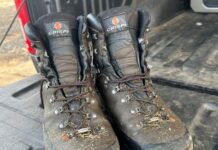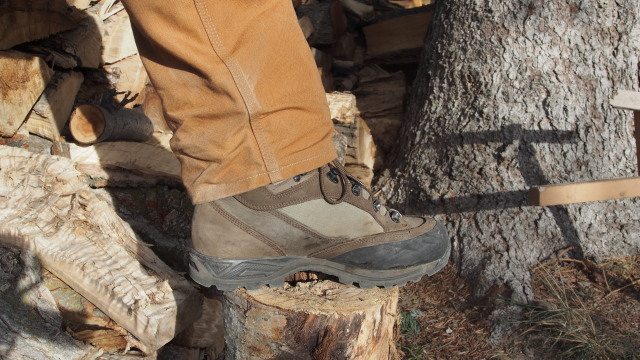
Schnee’s Bridger Hiker Boot
By Robby Denning, Rokslide Staff
From late June through early October, scouting and hunting mule deer in the West typically allows for a lighter weight, non-insulated boot. This means more comfort in both wear and heat dissipation. Lighter weight boots are typically easier to break in due to less leather/more synthetic construction unlike you usually find in a heavy duty hiking boot. Also, few active hunters (where you’re walking at least half the hours of your hunting day) need an insulated boot in temps down to just above freezing. In fact, insulated boots in these temps will make your feet sweat causing cold feet. You’ll actually be colder in an insulated boot that is even slightly damp, than a non-insulated dry boot.
For that reason, among others, I’ve started using light hikers later in the year than I have in the past. The weight savings of a light hiker means less fatigue at day’s end. I also find hikers much easier to break in than boots designed for carrying heavy loads. Hikers, being lighter and smaller by design, are also a muzzleloader’s/archer’s choice when hunting up close to game compared to their larger heavier and therefore noisier cousins.
This year, I gave the Schnee’s Bridger Hiker a shot. Besides hunting mule deer 30-40 days per year, I also operate a private land outfitting business. This puts me in the field an additional 10-20 days between the September bow season and the mid-October rifle season. Temps usually run between just below freezing to 70 degrees, a range I’ve found perfect for lightweight hikers like the Bridger.
Early to mid-fall in the West and before the snow flies is perfect timing for a light weight, uninsulated boot
Schnee’s advertises their Bridger as the lightest weight option in their Mountain Boot Lineup. The Bridger is built on the same midsole and outsole of the heavier boots but on a lighter chassis providing more flex. It tops out at 6″, about right for a balance between ankle support, keeping debris out, and a lightweight boot.
Mine arrived in late September directly from Schnee’s in Bozeman, Montana. While Schnee’s builds many of their boots in their Montana factory, the Bridger is an import from Italy. Like most high-end Italian boots, I could see the quality when I pulled mine out of the box. All leather and Cordura components are triple stitched. The leather is Nubuck, a cattle leather that is buffed on the outside providing a velvet-like feel and good durability. The rand runs half toe and sits atop a fairly aggressive Vibram sole.
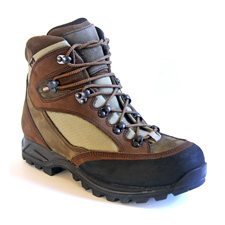
The fit was pretty good considering I have extremely wide feet, needing a 4E width in some brands. There was no width option, so I was relieved when the boots fit—albeit barely—my platypus-like feet. At a size 10, mine weighed in at 3 lbs, 5 oz. There was no published factory date for which to compare.
Schnee’s employs the eVent waterproof/breathable membrane, which is advertised by the manufacturer as 30% more breathable than Gore-Tex. It was my first experience with it and it performed well in the limited time I used it.
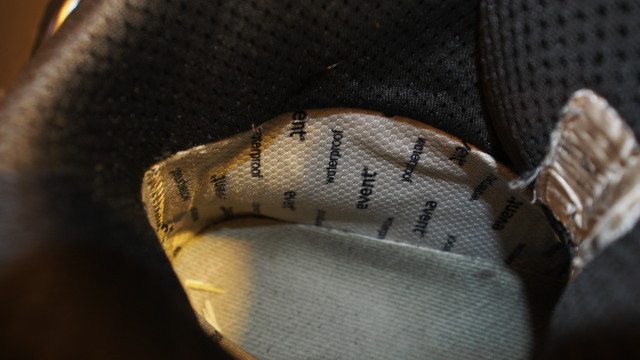 Schnee’s employes the eVent waterproof/breathable membrane, advertised as 30% better than Gore-Tex
Schnee’s employes the eVent waterproof/breathable membrane, advertised as 30% better than Gore-Tex
We didn’t get any significant precipitation during the season but plenty of dew and a few small creek crossings proved the eVent to be waterproof. I didn’t get damp feet even after a seven-day-in-a-row stint chasing bulls with clients. As I said in the intro, uninsulated hikers dissipate heat and moisture better and eVent had no problem keeping me dry.
I was able to put about 20 days and 60 miles on my Bridger’s before the cold and significant snow arrived. It didn’t take more than a few days to break-in the boots. I didn’t develop the slightest blister, just some tired feet and a little redness where the widest part of my feet contacted the boot. Even that disappeared with use.
I never carried more than about 30 pounds during the season and was well within the boot’s load capabilities. The Bridger’s are not designed to carry heavy packs but rather assist a hunter in traversing rough terrain more quietly under light loads, reducing fatigue, and noise. That is exactly how I used them and they performed well. I can usually get a horse close enough to a client’s elk that I don’t have to backpack heavy quarters, but in a pinch( and with caution and a walking-stick,) I think the Bridger still offers enough support to carry a heavy load (but do so at your own risk).
At season’s end, the front half of the boot still looked pretty new. The leather on both sides of the heel showed scuffs due to the absence of a full rand. The country I hunt is fairly rocky with plenty of lava (the great nemesis of leather boots). While the scuffs are likely only affecting appearance, I’d opt for the few extra ounces of a full rand given the rocky country I hunt. I guess something has to give when designing a lightweight boot.
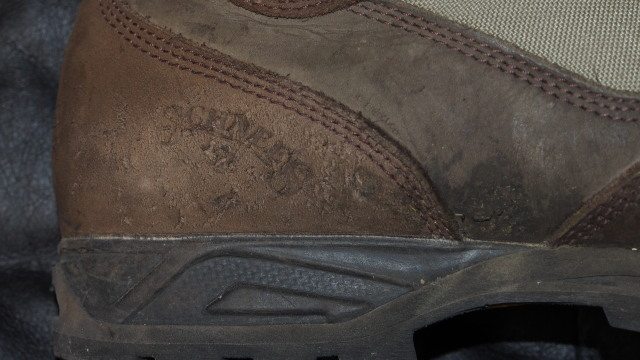
The stitching, laces, and hardware showed little if any wear. I’d estimate, based on this year’s wear, that this boot will last me 100 hunting days. At a retail of $329, I’m spending about $3/day to have a high quality, lightweight (and did I mention?) good looking hiker for all my early season hunts.
You can learn more or place an order at Schnee’s
Discuss this article here















